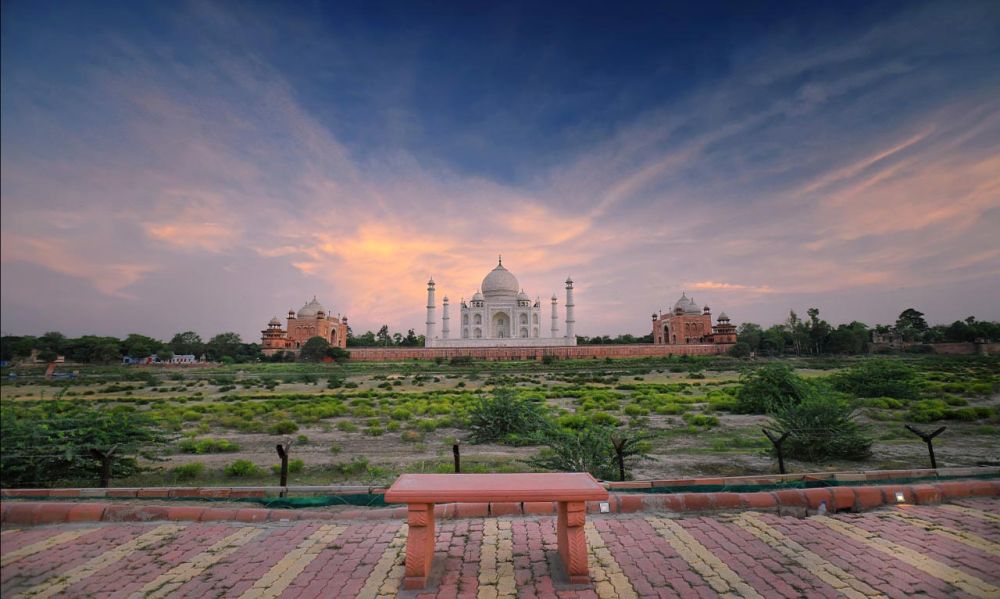

Mehtab Bagh, which translates to 'Moonlight Garden', is an ancient garden complex situated in Agra, Uttar Pradesh, directly opposite the iconic Taj Mahal. This 25-acre Mughal-era garden was constructed by Emperor Babur in the early 16th century and is believed to have been designed as an integral part of the Taj Mahal complex. Historically, it provided a stunning reflection of the Taj Mahal in its large octagonal pool during the evenings, especially under moonlight, hence its name.
Tourism in Mehtab Bagh originally began to gain traction with the coming of the British Raj in the 19th century. The colonial rulers took a keen interest in the ancient architectural marvels of India, with the Taj Mahal and its surrounding landscape attracting considerable attention. However, it was not until recent archaeological excavations in the 1990s that Mehtab Bagh was rediscovered in its full glory. The restoration work undertaken by the Archaeological Survey of India (ASI) revitalized the garden, unveiling its charbagh layout, fountains, pools, and pavilions. Such restorations have led to a renewed interest, making it a significant attraction for tourists visiting Agra.
 The beauty of Mehtab Bagh lies not only in its historical significance and garden aesthetics but also in the unobstructed and picturesque view of the Taj Mahal it offers across the Yamuna River. As a quieter spot compared to the bustling complex of the Taj itself, it has become a favored destination for photographers and those seeking a peaceful experience. With the rise of social media, images of the Taj Mahal taken from the gardens of Mehtab Bagh have become increasingly popular, drawing even more visitors.
In recent years, sustainability and responsible tourism have become a significant trend in the tourism sector globally, and Mehtab Bagh is no exception. The preservation of the garden's natural beauty, along with the maintenance of its historic integrity, is now a priority. With the increasing impact of climate change, methods to conserve water in the garden's ancient irrigation systems and efforts to keep the environment pollution-free are being stressed.
Another emerging trend is the promotion of cultural and local experiences. Tourists are seeking authentic, cultural interactions and are showing great interest in the local history, cuisine, and craft of the region. Visiting Mehtab Bagh is often combined with tour packages that highlight walks through nearby villages, Agra's Mughal heritage, and culinary tours.
In terms of accommodation and infrastructure, there is a move towards providing more luxury services and comfortable lodging that cater to international tourists while ensuring that facilities blend into the historical and natural panorama. This includes boutique hotels and homestays that emphasize an immersive experience.
Lastly, as digital platforms become more prominent in travel planning, there is a rise in virtual tours and online experiences. The accessibility of virtual content and stories about Mehtab Bagh and its relationship with the Taj Mahal contribute to digital engagement, attracting visitors to see the splendor of the garden and its surroundings in person.
To summarize, the tourism history of Mehtab Bagh combines a rediscovery of historical treasure with evolving trends to ensure that visitors from around the world can appreciate its timeless beauty and the surrounding cultural aura of Agra.